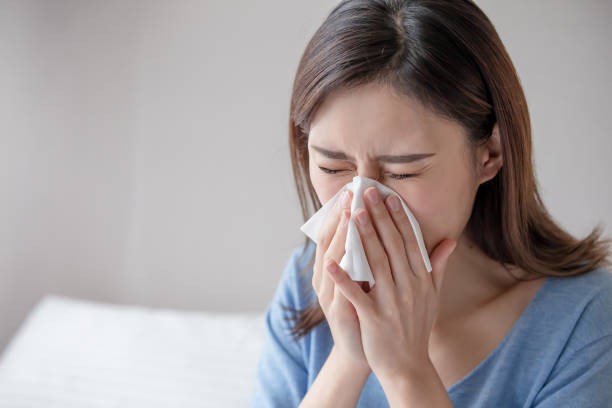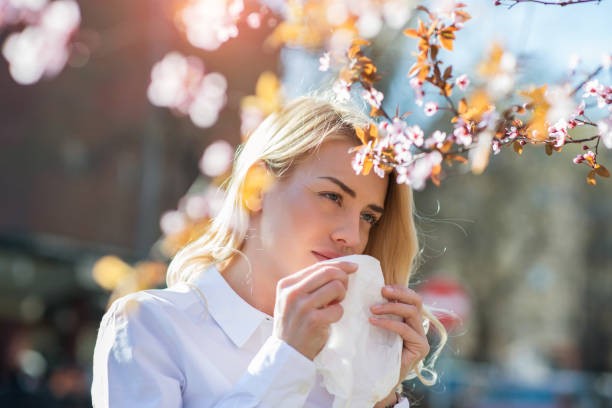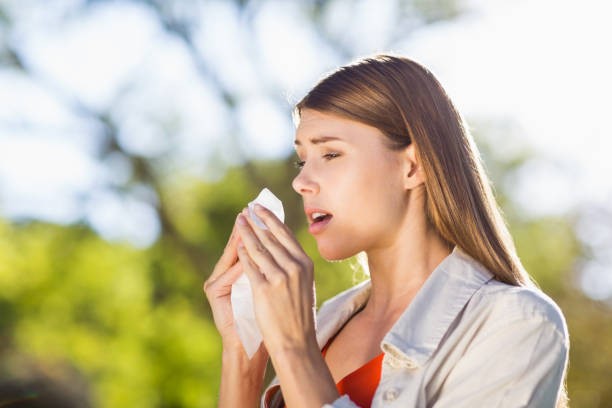Many of us are affected by it: When the first plants, trees, or bushes start to bloom in spring, the hay fever season begins. But the so-called late bloomers still plague many people in summer.
This isn’t very pleasant and often cannot be overcome without the right medication. This article will tell you what you can do effectively against hay fever.
What is hay fever?

Hay fever is an allergic reaction to pollen. More precisely, it is about the body’s overreaction to proteins from various plant pollen.
As with many allergies, it is also true that the human organism reacts to this trigger to different degrees. While some people don’t mind pollen count, others start sneezing heavily.
It is by no means just the hay that causes the symptoms. Pollen from other plants also has a corresponding effect. The technical term for hay fever is allergic rhinitis. This is an inflammation of the rhinitis (nasal lining).
These are the symptoms of hay fever (allergic rhinitis)

In addition to sneezing, symptoms include severe itching in the throat and red and watery eyes. Pollen may also cause allergic reactions in the lower respiratory tract.
In particularly bad cases, this can even lead to acute shortness of breath.
The common symptoms at a glance:
- reddened, itchy, watery eyes
- a runny nose
- restricted nasal breathing
- an itchy nose
- Urge to sneeze
The symptoms are caused by the fact that the immune system attempts to fight the proteins with antibodies.
It thus uses the same defense strategy against pathogens. The immune system then releases, among other things, histamine in the mucous membranes. The messenger substance causes what we see as symptoms of an allergy. Allergies to pollen, animal dander, or dust are identical in action to the human body.
If you suffer from a severe pollen allergy, you should go to the doctor and seek therapy.
In around a quarter of all affected allergy sufferers, bronchial asthma develops over the years due to the permanent stress on the immune system. It would help if you prevented the progression of these diseases.
When does the hay fever season begin and end?

In theory, there is no real limit to the hay fever season. Because there are almost always plants in bloom to which people can react allergically.
However, practice shows that certain plants have a particularly strong effect.
The primary season can thus be limited to the period between April and August.
The birch trees begin to bloom in April, marking the start of the hay fever season every year. The intensive flowering of grasses follows this. It extends over the entire course of the hay fever season and is therefore considered to be the eponym of allergic rhinitis.
But there are far more plants that we consider to be the cause of allergic rhinitis. While the birch is an early bloomer, the late bloomer begins to bloom in the early summer.
Rye, mugwort, and ragweed bloom at different times and keep allergy sufferers busy from June to September. However, since the number of potential triggers is reduced towards the end of the hay fever season, the late bloomers’ effects are not as significant.
By the beginning of September at the latest, the intensity of the pollen flow should noticeably decrease.
However, especially during the strong winds in autumn, plants’ pollen can be carried on again. Afterward, hazel and alder pollen can be rereleased as early as December. The flowering of these early bloomers begins as soon as February and changes almost seamlessly into the birch’s flowering.
Hay fever causes: what causes the allergy?

The cause of hay fever is a dysregulation of the immune system. It classifies the proteins of various plant pollen as harmful and tries to combat them. They are harmless to the body.
More and more people around the world suffer from a pollen allergy.
The researchers primarily blame climate change for this. It extends the flowering time of plants. At the same time, they produce more pollen due to higher CO2 content in the air.
The likelihood of a dysregulated immune system can be passed on to children by inheritance. According to research, the likelihood of suffering from allergy increases if the parents are already affected.
If neither parent has an acute allergy, the allergy risk for children is 5 to 15 percent. If both parents suffer from the same allergy, the allergy risk for the common children can increase to up to 80 percent.




